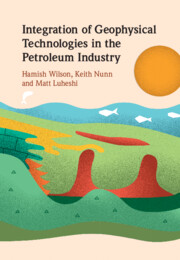Book contents
- Integration of Geophysical Technologies in the Petroleum Industry
- Integration of Geophysical Technologies in the Petroleum Industry
- Copyright page
- Contents
- Contributors
- 1 Introduction
- 2 The Hydrocarbon Exploration Process
- 3 Crustal Seismic Studies
- 4 Gravity and Magnetics
- 5 Full Tensor Gradiometry
- 6 Marine Electromagnetic Methods
- 7 Ocean Bottom Marine Seismic Methods
- 8 Microseismic Technology
- 9 A Road Map for Subsurface De-risking
- Glossary
- Index
- References
6 - Marine Electromagnetic Methods
Published online by Cambridge University Press: 25 November 2021
- Integration of Geophysical Technologies in the Petroleum Industry
- Integration of Geophysical Technologies in the Petroleum Industry
- Copyright page
- Contents
- Contributors
- 1 Introduction
- 2 The Hydrocarbon Exploration Process
- 3 Crustal Seismic Studies
- 4 Gravity and Magnetics
- 5 Full Tensor Gradiometry
- 6 Marine Electromagnetic Methods
- 7 Ocean Bottom Marine Seismic Methods
- 8 Microseismic Technology
- 9 A Road Map for Subsurface De-risking
- Glossary
- Index
- References
Summary
Marine electromagnetic (EM) methods can be used to determine the resistivity of the subsurface, which can in turn be used to investigate bothstructure and properties of the subsurface.Natural source magnetotelluric (MT) and controlled source electromagnetic (CSEM) methods have been applied to a range of exploration and exploitation problems. In areas of complex geology where seismic can struggle to produce a clear subsurface image, both CSEM and MT have been applied to improve velocity model building and hence improve the final migrated image.In reservoir characterisation problems, CSEM derived resistivity provides a valuable complement to seismically derived acoustic and elastic properties, and has been shown to reduce interpretation ambiguity, particularly in the case of hydrocarbon saturation uncertainty.In all cases, a careful multiphysics approach, in which marine EM methods are integrated with seismic and other geophysical methods, provides the most robust result.
Keywords
- Type
- Chapter
- Information
- Publisher: Cambridge University PressPrint publication year: 2021



